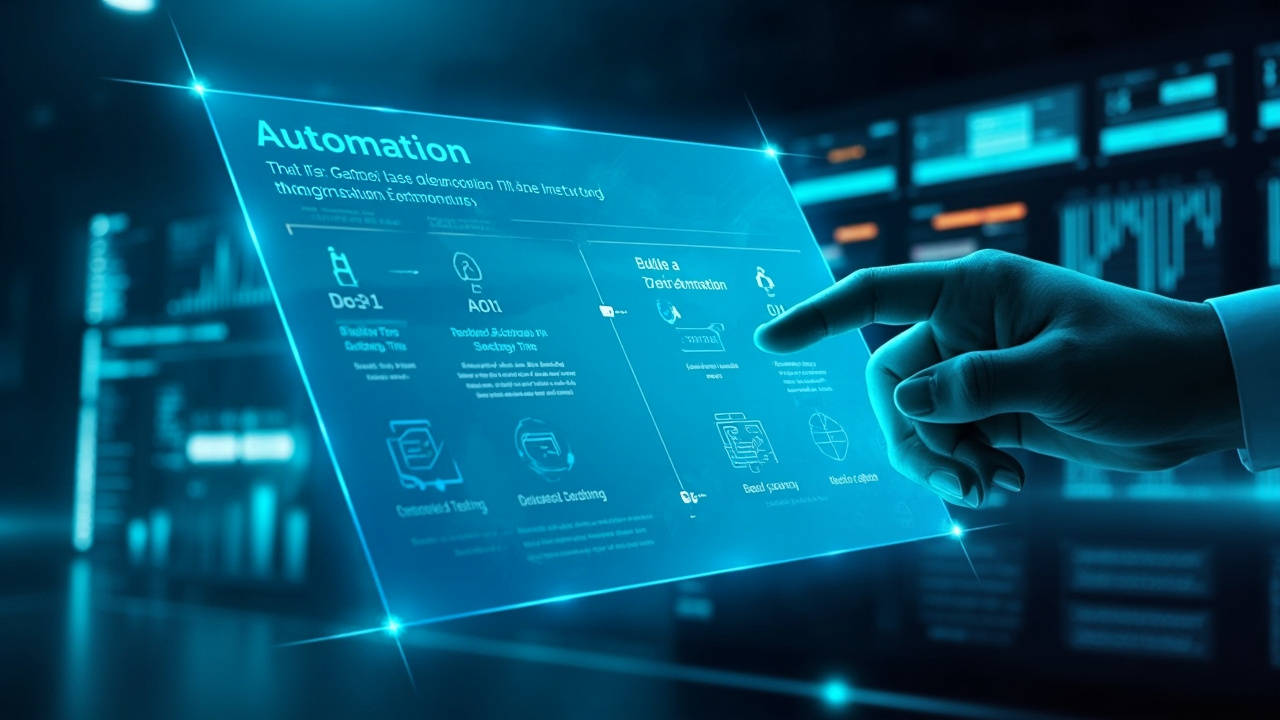Software testing has long been a cornerstone of successful software development. As the complexity and pace of development continue to accelerate, the demand for robust, efficient, and innovative testing solutions grows stronger. Welcome to a deep dive into the world of software testing, where we explore the intricacies, challenges, and cutting-edge solutions shaping the future of software quality assurance.
The digital age has ushered in an era where software is at the heart of practically every business operation. From banking apps to healthcare systems, reliable software performance is crucial. Yet, as software becomes more complex, ensuring its quality presents significant challenges. This complexity necessitates a re-evaluation of traditional testing methods, which often buckle under the pressure of rapid development cycles and diverse use cases.
As we navigate through this exploration, you’ll discover how industry leaders are addressing these challenges. We’ll uncover the multi-faceted nature of software testing, highlight the limitations of traditional approaches, and showcase innovative solutions like GenQE that are transforming the landscape. By the end, you’ll gain insights into optimizing your testing strategies for better software quality and faster time to market.
The Core of Software Testing: Understanding Its Importance

At its core, software testing is about ensuring that software behaves as expected. This seems straightforward, but the intricacies involved are anything but simple. As software becomes more integral to various industries, the stakes for ensuring its quality have never been higher.
Why Software Testing Matters
The primary goal of software testing is to identify defects and ensure that the product functions as intended. This not only improves the quality of the software but also enhances user satisfaction. In today’s competitive market, a single flaw can lead to significant reputational damage and financial loss.
Moreover, in sectors like healthcare and finance, software failures can have dire consequences. This elevates the role of software testing from a mere procedural necessity to a critical component of risk management.
“Testing is the last defense against a software crisis. It is the process that saves us from ourselves.”
The Limitations of Traditional Testing
Traditional testing methods, while foundational, are often inadequate for modern software demands. Manual testing, for instance, is labor-intensive and prone to human error. It struggles to keep up with continuous integration and deployment cycles that demand rapid feedback.
Even automated testing, which has been a game-changer, faces challenges. Script maintenance, especially in dynamic environments, can be cumbersome. As UI elements change, scripts break, leading to delays and increased maintenance costs. This is where innovative solutions like GenQE come into play, offering self-healing capabilities that address these issues efficiently.
The Cost of Quality: More Than Just a Price Tag
Investing in quality assurance through rigorous testing can initially seem costly. However, the cost of defects caught in production is exponentially higher. Effective testing not only reduces these long-term costs but also accelerates development cycles, enabling faster time to market.
As we delve deeper, we’ll explore various testing methodologies and how they contribute to software quality. Each approach brings unique strengths and challenges, shaping the way we think about testing in the modern era.
Exploring Testing Methodologies: A Comprehensive Guide

The landscape of software testing is vast, encompassing a range of methodologies, each suited to different aspects of the development process. Understanding these methodologies is crucial in selecting the right approach for your specific needs.
Agile Testing: A Dynamic Approach
Agile testing aligns with the principles of agile development, emphasizing flexibility, collaboration, and rapid feedback. It integrates testing throughout the development process rather than confining it to a specific phase.
In agile testing, testers and developers work closely, often in sprints, to continuously test and refine the software. This approach fosters a culture of quality and enables quick adaptation to changes.
“Agile testing is not just a methodology; it’s a mindset that prioritizes collaboration and responsiveness.”
Waterfall vs. Agile: A Comparative Insight
While agile testing offers numerous benefits, it’s essential to understand its predecessor the waterfall model. Waterfall testing follows a linear, sequential approach, where each phase must be completed before the next begins.
The waterfall model provides a structured framework that works well for projects with well-defined requirements. However, its rigidity can be a drawback in dynamic environments. Agile testing, with its adaptability, often proves more effective in such scenarios.
The Rise of DevOps and Continuous Testing
The DevOps culture has revolutionized software development, emphasizing collaboration between development and operations teams. Continuous testing is a critical component of DevOps, ensuring that testing occurs throughout the software lifecycle.
By automating tests and integrating them into the CI/CD pipeline, continuous testing provides rapid feedback. This not only reduces the time to identify and fix defects but also enhances software reliability.
Incorporating AI-powered solutions like GenQE can further enhance continuous testing by automating test generation and execution, ensuring comprehensive and efficient testing processes.
Automation: The Game Changer in Software Testing

Automation has become a cornerstone of modern software testing, offering the promise of efficiency, accuracy, and scalability. But what does effective test automation look like, and how can it be achieved?
The Benefits of Test Automation
Automated testing reduces the time and effort required for repetitive tests, allowing teams to focus on more complex scenarios. It enhances accuracy by minimizing human error and provides a scalable solution for large projects.
With automation, tests can be executed consistently across different environments, ensuring that software functions correctly in diverse conditions. This is particularly valuable for regression testing, where repeated execution is necessary to validate changes.
“Automation is not the future of testing; it is the present.”
Challenges in Automation and How to Overcome Them
Despite its benefits, test automation is not without challenges. Creating and maintaining test scripts can be time-consuming, especially in rapidly changing environments. This is where AI-powered platforms like GenQE shine, offering self-healing capabilities that adapt to changes automatically, reducing script maintenance efforts.
Another challenge is selecting the right tools and frameworks. It’s crucial to choose solutions that align with your team’s skills and project requirements. Integration with existing systems, such as CI/CD pipelines, is also essential for seamless automation.
Best Practices for Successful Automation
To maximize the benefits of automation, it’s important to follow best practices
- Start small: Begin with automating critical tests and gradually expand. Prioritize tests: Focus on high-impact areas that benefit most from automation. Regularly update scripts: Keep test scripts up-to-date with software changes. Integrate with CI/CD: Ensure automated tests are part of the development pipeline for continuous feedback.
By following these practices and leveraging advanced tools like GenQE, teams can harness the full potential of test automation.
The Role of Artificial Intelligence in Modern Testing

Artificial Intelligence (AI) is revolutionizing many aspects of technology, and software testing is no exception. AI offers innovative solutions to some of the most pressing testing challenges, paving the way for more efficient and effective quality assurance.
AI-Powered Test Generation
One of the most significant advantages of AI in testing is its ability to generate test cases automatically. By analyzing software requirements, user behavior, and historical data, AI can create comprehensive test cases that improve coverage and efficiency.
Platforms like GenQE utilize AI-driven test generation to reduce the dependency on manual test case design. This not only accelerates the testing process but also enhances its accuracy and adaptability.
“AI is not just a tool; it’s a partner in the quest for software excellence.”
Smart Test Execution and Self-Healing Capabilities
AI enhances not only test generation but also execution. By prioritizing and executing test cases based on risk analysis, AI ensures that critical areas are tested first. This optimization allows teams to focus on high-impact defects, improving overall software quality.
Furthermore, AI-powered platforms like GenQE offer self-healing capabilities that automatically adjust test scripts when UI elements change. This reduces maintenance efforts and minimizes downtime, making testing more resilient to change.
Defect Detection and Analytics
AI’s ability to detect patterns and anomalies in test results enhances defect detection. Machine learning algorithms can identify potential defects early in the development cycle, preventing critical issues from reaching production.
Advanced analytics and reporting, powered by AI, provide detailed insights into software quality trends. These insights enable teams to make informed decisions and continuously improve their testing strategies.
Integrating Testing into the Development Pipeline

Integrating testing into the development pipeline is crucial for achieving continuous quality assurance. This integration ensures that testing is not an isolated phase but a continuous process throughout the software lifecycle.
The Importance of Seamless Integration
Seamless integration of testing into the development pipeline accelerates feedback loops, reduces time to market, and enhances software reliability. It enables teams to detect and address defects early, minimizing the risk of costly rework.
This integration is particularly vital in DevOps environments, where collaboration and automation are key. Automated testing tools, such as GenQE, integrate with CI/CD tools like Jenkins, GitHub Actions, and Azure DevOps, ensuring that testing is a natural part of the development workflow.
“Integration is the key to unlocking the full potential of continuous testing.”
Overcoming Integration Challenges
Integrating testing into the development pipeline can present challenges, such as tool compatibility and process alignment. To overcome these challenges, it’s essential to
- Choose compatible tools: Select testing tools that integrate smoothly with your existing systems. Align processes: Ensure that testing processes align with development and operations workflows. Foster collaboration: Encourage collaboration between teams to streamline integration efforts.
By addressing these challenges and leveraging innovative solutions like GenQE, organizations can achieve seamless integration and optimize their testing processes.
Continuous Improvement and Feedback Loops
Integration is not a one-time effort; it requires continuous improvement and adaptation. Regularly review and refine your testing processes to ensure they remain aligned with project goals and industry best practices.
Feedback loops are a critical component of continuous improvement. By incorporating feedback from testing results into development processes, teams can continuously enhance software quality and efficiency.
The Future of Software Testing: Trends and Innovations

As technology evolves, so too does the field of software testing. Emerging trends and innovations are shaping the future of testing, offering exciting possibilities for enhancing software quality and efficiency.
The Rise of AI and Machine Learning
AI and machine learning are at the forefront of testing innovation. As we’ve explored, these technologies offer powerful solutions for test generation, execution, and defect detection. Their ability to learn and adapt makes them invaluable tools in the quest for software excellence.
Platforms like GenQE exemplify the potential of AI in testing, providing advanced capabilities that streamline processes and improve outcomes.
“The future of testing is bright, powered by intelligent automation and continuous innovation.”
Shift-Left Testing: A Proactive Approach
Shift-left testing is a proactive approach that emphasizes early testing in the development process. By identifying and addressing defects early, shift-left testing reduces the risk of costly rework and accelerates time to market.
This approach aligns with agile and DevOps practices, fostering a culture of quality from the outset. Tools like GenQE support shift-left testing by providing automated, AI-driven solutions that enhance early testing efforts.
The Growing Importance of Security Testing
As cybersecurity threats become more sophisticated, the importance of security testing cannot be overstated. Security testing ensures that software is resilient to attacks and safeguards sensitive data.
Incorporating security testing into the overall testing strategy is essential for protecting both users and organizations. AI-powered platforms can enhance security testing by identifying vulnerabilities and potential threats early in the development cycle.
Conclusion: Embracing a New Era of Software Testing

The world of software testing is undergoing a transformation, driven by technological advancements and changing industry demands. As we’ve explored, traditional testing methods are no longer sufficient to meet the challenges of modern software development. Innovative solutions, such as AI-powered platforms like GenQE, are paving the way for a new era of testing excellence.
By embracing these innovations and integrating them into your testing strategy, you can enhance software quality, reduce costs, and accelerate development cycles. The future of software testing is here, and it holds exciting possibilities for those willing to explore and adopt new approaches.
As you consider the insights shared in this article, we encourage you to explore the tools and methodologies discussed, including GenQE, to optimize your testing processes and achieve software excellence. The journey to transformative software quality starts with a single step will you take it?
“In the rapidly evolving world of software development, testing is not just a phase; it’s a continuous journey towards excellence.”
Discover More Innovative Solutions
Want to learn more about the tools and technologies discussed in this article? Explore how these innovations can be tailored to your specific needs and workflow requirements.
Our team of experts is available to answer your questions and provide personalized insights into how modern solutions like GenQE can address your specific challenges.
If the link above does not work, please visit: https://calendly.com/dm-csimplifyit/30min?month=2025-05